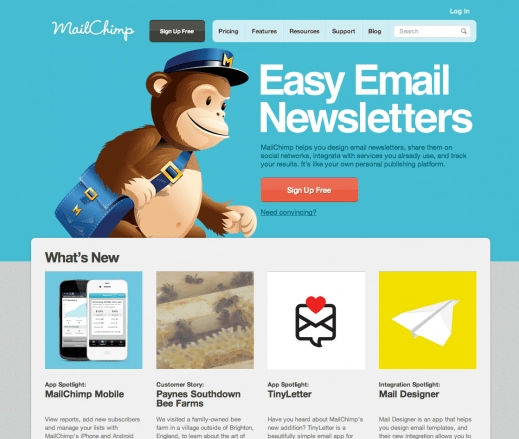Not every visitor to your site is the same. People take in information in different ways and view the world differently. Fortunately, the Myer-briggs Type Indicator (MBTI) gives us insight into various types of people.
Originally, there are 16 different MBTI person types, classified according to their decision preferences. Psychologist David Keirsey turned it into a more practical model that provides four types of people: the competitive, the methodical, the humanistic and the spontaneous person.
The Eisenberg brothers brought the four types of customers to the online world with the book 'Waiting for your cat to bark?'. In this article, we take a closer look at the spontaneous visitor. This type visitor makes quick decisions based on emotion.
The spontaneous visitor: stimulating the senses
So our Esther is a spontaneous visitor where the MBTI trait 'sensing' is dominant. This means that the five senses - smelling, feeling, hearing, seeing and listening - are important to her in the way she takes in information.
Because she is sensitive to stimulation of the senses, Esther finds it harder to concentrate than the other types. There is always something she hears or smells that takes her out of her concentration. She can lose herself in her sensory perception and therefore absorbs information in her own way.
Therefore, communicate with (bright) colours, bold text and images. Or use a video to show a demonstration or how something works. Make important information clearly visible. Bold text, shading, bulleted lists that emphasise this information help.
Example: Mailchimp
Spontaneous visitors will feast on Mailchimp's site. It works very conveniently with large coloured buttons, short texts and simple language. MailChimp makes a lot of use of pictures, icons and videos and you can get started with 1 push of a button. Moreover, Freddie the monkey always smiles friendly and gives you personal messages when you are logged in!

The spontaneous visitor: making a quick choice
The second dominant MBTI trait of the spontaneous visitor is 'perceiving'. As a result, Esther prefers a flexible, spontaneous approach and likes to keep all options open. Esther lives in the now and decides quickly.
She wants to make a good choice, but has no desire (nor concentration) to go through all the details. So communicating quickly is important if you want to keep her on her toes. Therefore, it is wise to name the immediate benefits for her.
She is triggered by phrases like 'readily available' and 'the benefits for you'. A positive review is a shortcut to a decision for her, then she doesn't have to go through the whole process.
The spontaneous visitor: prone to cross- and upsell
Esther is optimistic and impulsive. She is more inclined to take risks than the other types and is sensitive to good service. She is more likely to put a book 'ordered today, delivered tomorrow' in her shopping basket than one with a delivery time of three to five working days. If a book is not readily available, help her by showing similar books that are.
Esther often only knows she wants something when she sees it. She is the type of person who quickly puts the bargains in her shopping basket at the checkout. Although a site does not have a physical checkout, you can apply the same techniques. If she has just ordered a book, you can offer her a second book at a discount. In a split second, she will decide whether to buy it or not.
Just a few more tips
Keep it short & simple; Esther is ready to close the deal.
What products or services are readily available? Show them!
Tell why you are the best choice; right here, right now.
Set information into simple graphs and use reviews.
Provide summaries and shortcuts to the end point.
Stand ready when Esther makes her decision, you'll lose her in no time.
The spontaneous visitor: freedom, create and inspire
David Keirsey calls the spontaneous user the 'artisan'. In the video below, you can hear and see that the artisan values freedom and gives impulses free rein. He likes to create things and acts on his feelings. He chooses a job that matches this, so work doesn't feel like work.
Meld je aan voor onze nieuwsbrief en ontvang maandelijks praktische inzichten, tips en tricks om je op weg te helpen naar online groei!
Vul hieronder jouw e-mail in en ontvang direct een handig weetje 🙂
